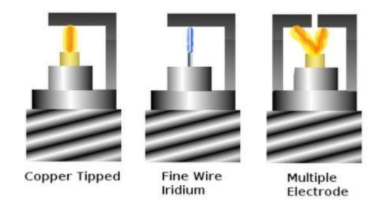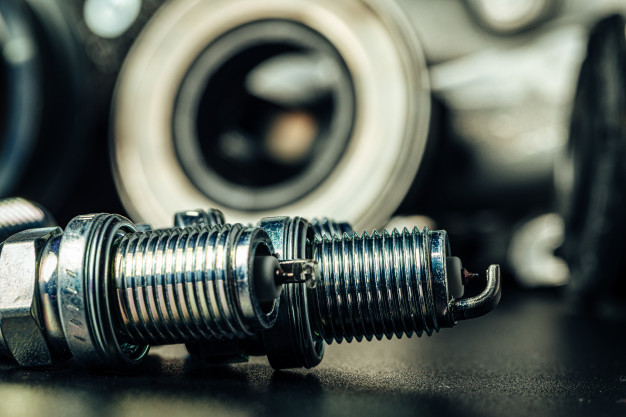Spark plugs started getting press in the late 1980s and early 90s, for a couple of reasons. The first is that, prior to electronic fuel injection, the carburetor was the engine’s weak link. For older carbureted engines, the traditional spark plug was more than adequate to ignite gas and air in the chamber. The second reason is that, in the early 1970s, original equipment manufacturers began adopting a type of aftermarket ignition system originally engineered by Per-Lux (now Pertronix). These more powerful point-less ignition systems allowed for a much stronger spark, and sooner or later someone was bound to take advantage of it.
At some point, nearly all drivers will get into an accident
This is where good quality coverage comes into play. When searching for the best policy, you need to balance both the cheapest rates along with coverage that will protect you. Many people choose a very cheap car insurance no deposit policy, as it allows them quality coverage at an affordable rate.
Spark Plug Types
You’ve probably seen those commercials for multi-tip spark plugs, and platinum- or iridium-tipped spark plugs. Before we get into all that, take a look at the following image:

Copper-tipped spark plugs
On the left, you can see a standard copper-tipped spark plug. Notice that the gold-colored tip is very fat; this is because copper has all the hardness of Gruyere cheese at 1,000-plus degrees, so the plug tip has to be very large to stand up to the heat and corrosive gases in the combustion chamber. You can think of a platinum-tipped spark plug as more of a “platinum-dipped” plug since the platinum used in these applications is just a thin coating over the copper that helps the plug to last longer. Now, look at the spark between the copper tip and the ground electrode; it’s wide, flat, and yellow, meaning that it’s cold and weak.
Fine-wire plugs
High-performance, fine-wire plugs like that shown in the middle use a very high-temperature metal like iridium to make the tip as thin as possible. Making the tip wire as thin as possible concentrates the spark energy, making for a blue-white-hot, searing spark that will immediately set off the air-fuel mixture. If you can afford them, fine-wire iridium plugs are the best, performance-wise. You can also buy fine-wire platinum plugs. Just make sure that they’re fine-wired and not just platinum-coated for longevity.
Multiple electrode spark plugs
Multiple-ground and multiple-electrode spark plugs (commonly called +2 or +3 plugs) were some of the first aftermarket plugs to rise in popularity, but demand has tapered off a bit in recent years. Using a pair of ground straps allows the spark to follow the path of least resistance, which increases the spark energy and reduces the odds of a misfire. These types of plugs worked well as retrofits into older engines, which often didn’t have the best ignition systems or most efficient combustion chambers.
But the more powerful ignition systems we use today expose the multiple strap’s biggest shortcoming; namely, that the second strap takes up space around the tip, and that gets in the way of burning gases expanding away from the tip. While these plugs can create a more powerful spark, that little bit of extra power won’t necessarily offset the losses from interference with flame movement.
So, what it comes down to is that, if you’ve got the choice between a multi-ground plug and a single-ground fine-wire iridium plug at the same price, then get the fine-wire. If you can’t afford the fine-wire plug, a multi-ground plug will probably be a little better than a standard single-ground.
Checking gap
So, now that you’ve picked a plug, you’ll need to check if it’s the gap. All manufacturers specify a certain gap between the tip and the ground strap. More powerful ignition systems can run a larger gap, and ignite more of the air/fuel mixture in one ignition event. However, that larger gap also increases the odds of a misfire, because it requires more power to jump the gap.
Never mind what the guy at the parts store says; you should always check the gap on new spark plugs against what the gap should be for your application. While spark plugs for a given application will typically come pre-gapped, it doesn’t take much impact force during shipping and packaging to throw that gap off by 10 percent or more. If the plugs are adjustable, it’s a simple matter to fix the incorrect gap. If not, you should take the plug back and get a new one.
Concluding
Platinum-tipped plugs for increased longevity, copper-tipped plugs for a reduced cost. Fine-wire, iridium, or platinum-tipped plugs for increased performance. Quicker ignition will also allow you to run more timing advance, which can further increase performance. What they say in the commercials is true: one perfect spark beats a bunch of weak ones.





























































